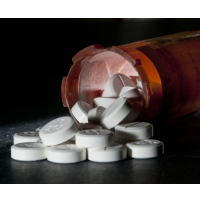Drug Overdoses Drive Rare Rise in Death Rate
 (photo: Education Images/UIG via Getty Images)
(photo: Education Images/UIG via Getty Images)
By Sabrina Tavernise, New York Times
WASHINGTON — The death rate in the United States rose last year for the first time in a decade, preliminary federal data show, a rare increase that was driven in part by more people dying from drug overdoses, suicide and Alzheimer’s disease. The death rate from heart disease, long in decline, edged up slightly.
Death rates — measured as the number of deaths per 100,000 people — have been declining for years, an effect of improvements in health, disease management and medical technology.
While recent research has documented sharp rises in death rates among certain groups — in particular less educated whites, who have been hardest hit by the prescription drug epidemic — increases for the entire population are relatively rare.
Federal researchers cautioned that it was too early to tell whether the rising mortality among whites had pushed up the overall national death rate. (Preliminary data is not broken down by race, and final data will not be out until later this year.) But they said the rise was real, and while it is premature to ring an alarm now, if it continues, it could be a signal of distress in the health of the nation.
“It’s an uptick in mortality and that doesn’t usually happen, so it’s significant,” said Robert Anderson, the chief of mortality statistics at the National Center for Health Statistics, part of the Centers for Disease Control and Prevention. “But the question is, what does it mean? We really need more data to know. If we start looking at 2016 and we see another rise, we’ll be a lot more concerned.”
The death rate rose to 729.5 deaths per 100,000 people in 2015, up from 723.2 in 2014, according to the National Center for Health Statistics. It was one of the few times in the past 25 years that the rate has increased. A bad flu season pushed it up in 2005, and AIDS and the flu contributed to a sharp increase in 1993. In 1999, there was a tiny increase.
Experts said the current rise was surprising.
“We are not accustomed to seeing death rates increase on a national scale,” said Andrew Fenelon, a researcher at the CDC who did not work on the paper. “We’ve seen increases in mortality for some groups, but it is quite rare to see it for the whole population.”
He added that it would drag the United States further behind its European peers: “Many countries in Europe are witnessing declines in mortality, so the gap between the U.S. and other countries is growing.”
Others said the finding seemed to fit the broader pattern of rising mortality among working-class whites, a trend that has drawn significant attention recently. Last year, a paper by Anne Case and Angus Deaton documented rising death rates among middle-age white Americans, particularly those with no more than a high school education. Other research has found rising rates among younger whites.
“This is probably heavily influenced by whites,” said Sam Harper, an epidemiologist at McGill University in Montreal. “It does sort of fit together.”
Chronic diseases like cancer and heart disease take by far the most American lives, far more, for example, than suicide or homicide, so any change in such causes can have a big effect on the final numbers. Anderson pointed out that the death rate from heart disease, which had been declining for decades — and offsetting the rises in drug deaths, for example — flattened. That gives other causes of death more of an influence, Anderson said, as they are no longer being offset by declines from heart disease.
The death rate from heart disease stood at 167.1 in 2015, up from 166.7 in 2014, though the rise was not statistically significant. It was the first time since 1993 that the rate did not decline, Anderson said.
The death rate from suicides rose to 13.1 in the third quarter of 2015, from 12.7 in the same quarter of 2014. (The last quarter of 2015 data was not yet available for suicides.)
The same was true for drug overdoses, whose data the report had for only the first two quarters of 2015. The death rate for overdoses rose to 15.2 in the second quarter of 2015, compared with 14.1 in the same quarter of 2014. The rate for so-called unintentional injuries, which include drug overdoses and car accidents, rose to 42 in the third quarter of 2015, up from 39.9 in the same quarter of 2014.
The rate for Alzheimer’s disease was also up, rising to 29.2 in 2015, compared with 25.4 in 2014, the continuation of some years of increases. Anderson said that part of the rise was more precise reporting of Alzheimer’s on death certificates, but that overall dementia-related deaths had increased over time.
To Learn More:
Rural Towns Lead Increase in U.S. Suicide Rate (by Noel Brinkerhoff and Steve Straehley, AllGov)
Increasing Addiction to Prescription Opioids Fuels Rise in Heroin Overdose Deaths (by Noel Brinkerhoff, AllGov)
More U.S. Deaths from Prescription Drug Abuse than from Heroin and Cocaine Combined (by Noel Brinkerhoff, AllGov)
Drugs Now Cause More Deaths than Car Crashes (by Noel Brinkerhoff, AllGov)
- Top Stories
- Unusual News
- Where is the Money Going?
- Controversies
- U.S. and the World
- Appointments and Resignations
- Latest News
- Trump Deports JD Vance and His Wife
- Trump Offers to Return Alaska to Russia
- Musk and Trump Fire Members of Congress
- Trump Calls for Violent Street Demonstrations Against Himself
- Trump Changes Name of Republican Party





Comments
moreless